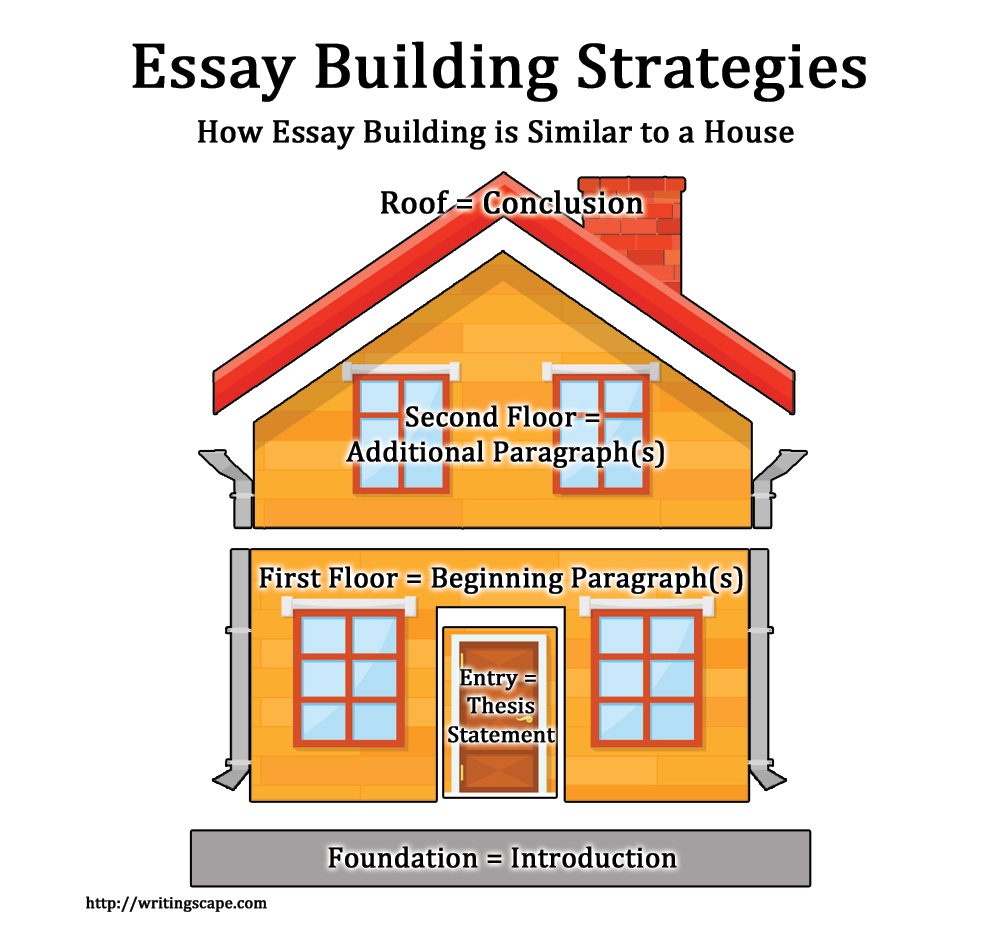How Building an Essay is Similar to Building a House
While there are many writing strategies for building an essay that can be successful, I often recommend this strategy to my students because I think it is easy to relate to and helps students clearly see the bottom up structure of essay writing.
In this method of building an essay, I encourage students to consider that an essay is very similar to a house. In general, an essay needs an introduction, a thesis statement, several body paragraphs, and a conclusion. Likewise, a house needs a foundation, an entrance, one or more floors, and a roof. If you try to build a first floor without building the foundation, there is nothing to hold up the house and it loses all sense of footing and focus!
Foundation (Introduction)
Consider the foundation to be the introduction of the essay. Here, you front load your readers with information they may need in order to know what you are going to talk about. A good introduction should contain a hook and some background information on the topic (not too much! Just enough to get your audience’s interest!). It should end in a thesis statement – which is covered in the next section.
An Entrance (Thesis Statement)
At the end of the introduction, you should always have a thesis statement. While this is part of the introduction, it is also an essential element – just like the front door of the house! Think of the thesis statement as a pathway to push your readers into the interior of your work. Without it, your reader would not know where to start. A good thesis statement should be a single, declaratory sentence of no more than 25 words that clearly identifies the topic of the paper and the main point of the paper.
First floor (Beginning Paragraphs)
A proper first floor needs to match up with your foundation in order to make sense and keep the structure of the house stable. In an essay, this is similar to your beginning paragraphs. These paragraphs may differ in focus and structure based on the type of essay you are writing, but they will essentially get your essay off to a good start. In these beginning paragraphs, you want to make sure you stay on topic and deliver on what you have started. Give background on the topic, share a summary of the topic, build the context of the topic for the reader, and give examples from other sources to strengthen your credibility. As you build these paragraphs, make sure each one contains a topic sentence, supporting details, and concluding sentence.
Second Floor (Additional Paragraphs)
Once you have passed through the first floor, it’s time to get to the real nitty gritty! In most homes, the second floor contains the bedrooms – the heart of the house. In an essay, the additional paragraphs beyond the beginning paragraphs will build the argument, analysis, compare/contrast, or other type of essay, really fleshing out your overall work. You will want to build a bridge between the beginning paragraphs and these paragraphs, similar to a “staircase” – an entryway from one part of the essay into the other. Transitional phrases at the start of paragraphs can help build these staircases and help your reader follow along with your essay. Don’t forget – these paragraphs also need a topic sentence, supporting details, and concluding sentence.
Roof (Conclusion)
A house wouldn’t be very good if it didn’t have a roof on top – and your essay would feel incomplete without a conclusion at the end. In the conclusion, you will wrap up the essay and give the reader a sense of closure, clearly identifying your main point or position for the reader. A good conclusion should start with a rephrasing of the thesis statement followed by a summary of your main points and ending in a final thought or takeaway for the reader. It should not include any new information.
I hope that this strategy can help you build essays just like it has helped my students build essays. There are many strategies you can use, but students have often told me that this strategy helps them truly “see” what they are building from start to finish in a way that simply makes sense!
